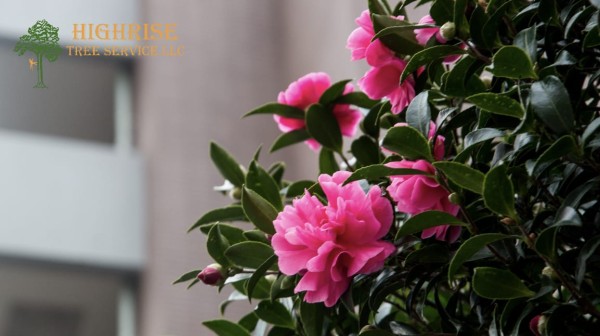What You Can Grow in Shady Places Beautiful and Practical Plants for Low-Light Areas

United States, 26th Jun 2025 – Sunny gardens often get all the attention, but shaded spots can be just as lush and vibrant with the right plant selection. Whether you’re working with the north side of your house, the space beneath tall trees, or areas shaded by buildings or fences, there’s a wide variety of plants that thrive without direct sun. Shade gardens can be full of color, texture, and interest—all it takes is choosing the right plants for the light conditions.
Here’s a guide to trees, shrubs, perennials, groundcovers, and even edibles that flourish in Tucson’s shaded garden spaces.
Trees and Shrubs That Thrive in the Shade
When looking to anchor a shaded landscape, consider trees and shrubs that not only tolerate lower light levels but also offer structure and beauty.
Japanese Maple – Known for its elegant form and colorful foliage, the Japanese maple is ideal for partial shade. Its delicate leaves provide a striking focal point in any shaded yard.
Camellias – These evergreen shrubs are a classic choice for filtered light areas. They offer beautiful blooms and glossy green leaves, especially in cooler or east-facing spots.
Hydrangeas – While many hydrangeas enjoy some sun, most prefer morning light and protection from the intense afternoon rays. Their large, vibrant blooms bring dramatic color to shady garden beds.
Azaleas and Rhododendrons – These flowering shrubs do well in acidic, well-drained soil and bloom beautifully in spring, even in dappled light.
Yews – Durable and shade-tolerant, yews are evergreen shrubs that work well as hedges or backdrop plantings in low-light areas.
Shade-Loving Perennials
Perennials are essential for adding lasting color and texture to a shady space. Many of these plants come back year after year and require little maintenance once established.
Hostas – A favorite in shade gardens, hostas offer bold foliage in a variety of sizes and colors. They thrive in rich soil and offer a wide range of greens, blues, and variegated tones.
Ferns – Ferns such as the Japanese painted fern and lady fern bring a soft, woodland feel to gardens. They’re ideal for moist, well-shaded spots.
Astilbe – This moisture-loving perennial produces feathery flower spikes in white, pink, or red and does best in cool, shaded areas.
Bleeding Heart – With its arching stems and heart-shaped blooms, this plant thrives in spring and early summer before going dormant in hotter months.
Heuchera (Coral Bells) – These low-growing perennials are prized for their colorful foliage and delicate flowers, which brighten up even the darkest corners.
Groundcovers and Low-Growing Plants
Groundcovers are perfect for suppressing weeds and adding a natural flow to garden beds, slopes, and pathways.
Liriope – Sometimes referred to as lilyturf, liriope is a hardy groundcover that tolerates partial shade and produces small spikes of purple flowers.
Sweet Woodruff – This fragrant plant spreads gently and features tiny white blooms. It’s ideal for a woodland-style setting under trees or shrubs.
Pachysandra – A tough, evergreen groundcover that handles deep shade well, pachysandra forms a dense carpet in hard-to-fill spaces.
Vinca Minor – Also known as periwinkle, this fast-growing plant spreads easily and brings color to shady areas with its glossy leaves and soft blue flowers.
Edible Plants That Grow in Shade
Even in low-light areas, you can still grow a handful of useful and tasty plants—especially leafy greens and hardy herbs.
Lettuce – Cooler, shadier spots help prevent lettuce from bolting too quickly in warm weather, making it a great crop for early or late season.
Spinach and Kale – These greens tolerate partial shade and actually prefer cooler growing conditions, making them perfect for under taller plants or near shaded walls.
Mint – Mint is a vigorous grower that actually does better in partial shade. Just be sure to plant it in a container—it spreads rapidly.
Parsley and Cilantro – These herbs can grow in limited light and still offer fresh, flavorful leaves for cooking.
Tips for Gardening in the Shade
To get the most out of your shade garden, consider these helpful tips:
- Understand the type of shade you have—whether it’s light, partial, or deep—so you can choose the right plants.
- Improve soil quality by adding compost or organic matter, especially in dry or compacted shaded areas.
- Don’t assume shaded areas are moist—trees often absorb surrounding water, so monitor soil moisture regularly.
- Focus on texture and foliage to add depth and beauty when flowers are limited.
Final Thoughts
Shady areas may seem like a challenge, but with a little planning, they can become some of the most relaxing and beautiful parts of your garden. From ornamental trees and leafy perennials to fragrant herbs and colorful groundcovers, there’s no shortage of plants that love low-light conditions. Embrace the shade and transform those dim corners into green, thriving spaces full of life and texture.
For more information on Tree Trimmers and Tree Removal in Tucson, check out Highrise Tree Service in Tucson, AZ. Follow us on Facebook and Instagram.
This information for general reading purposes only and should not be considered as professional or legal advice.
Media Contact
Organization: Highrise Tree Service
Contact Person: Office Manager
Website: https://highrisetreeservice.com/
Email: Send Email
Country: United States
Release Id: 26062529849
